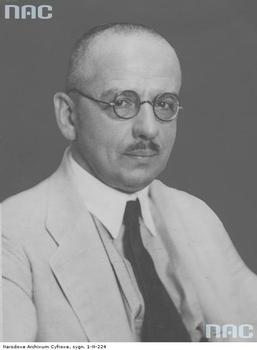Biographical Information
| Name: | Maksymilian Huber |
|---|---|
| Full name: | Maksymilian Tytus Huber |
| Born on | 4 January 1872 in Krościenko nad Dunajcem, Lesser Poland Voivodeship, Poland, Europe |
| Deceased on | 9 December 1950 in Cracow, Lesser Poland Voivodeship, Poland, Europe |
Short biography of Maksymilian Huber
He passed the entrance examination for Lemberg Polytechnic in 1889 and just one year later presented his first scientific publication. He passed his diploma examination with distinction in 1894 and, following military service and a one-year scholarship at the University of Berlin (reading mathematics and astronomy), returned to Lemberg in 1898 in order to take up the post of assistant to the chair of mathematics at the Polytechnic for one year. During his teaching activities in Kraków training colleges, he studied mechanics and published his first strength hypothesis and his impact theory (both in 1904); the latter work formed the basis for his doctorate thesis. R. v. Mises and H. Hencky presented adequate strength hypotheses in 1913 and 1923 respectively without any knowledge of Huber’s hypothesis. In 1908 he was appointed to the chair of applied mechanics at Lemberg Polytechnic. He was captured by the Russians in World War 1 and later met Timoshenko and Galerkin during a period at the University of Kazan. Following the restoration of the Polish state, he was able to resume his teaching and research activities – which he did with great success – at his old Alma Mater, which was now known under the name of Politechnika Lwowska. It was here that he devised his theory of the orthogonal-anisotropic slab (Huber’s continuum). Huber became the “Grand Old Man” of applied mechanics and theory of structures in Poland. For instance, with the help of Wacław Olszak and Witold Nowacki he laid the foundation for the internationally acclaimed Polish school of applied mechanics. Like many surviving members of the Polish intelligentsia, he helped to maintain the scientific and cultural life of Poland (illegally) during the German occupation. Following the liberation of Poland, he became head of the chair of stereo mechanics at the Politechnika Gdańska, formerly Danzig TH.
Main contributions to structurl analysis:
Właściwa praca odkształcenia jako miara wytężenia materiału (actual deformation work as a measure of material strain) [1904/1]; Zur Theorie der Berührung fester elastischer Körper [1904/2]; Teoria płyt prostokątnie różnokierunkowych wraz z technicznymi zastosowaniami (theory and technical applications of orthotropic plates) [1921]; Die Theorie der kreuzweise bewehrten Eisenbetonplatten nebst Anwendungen auf mehrere bautechnisch wichtige Aufgaben über rechteckige Platten [1923–26]; Probleme der Statik technisch wichtiger orthotroper Platten [1929]
Source: Kurrer, Karl-Eugen The History of the Theory of Structures, Wilhelm Ernst & Sohn Verlag für Architektur und technische Wissenschaften GmbH, Berlin (Deutschland), ISBN 3-433-01838-3, 2008; p. 738
Relevant Publications
- (2008): The History of the Theory of Structures. From Arch Analysis to Computational Mechanics. 1st edition, Wilhelm Ernst & Sohn Verlag für Architektur und technische Wissenschaften GmbH, Berlin (Germany), ISBN 978-3-433-01838-5, pp. 848.
- (2018): The History of the Theory of Structures. Searching for Equilibrium. 2nd edition, Wilhelm Ernst & Sohn Verlag für technische Wissenschaften, Berlin (Germany), ISBN 978-3-433-03229-9, pp. 1009-1010.
- About this
data sheet - Person-ID
1009830 - Published on:
13/08/2013 - Last updated on:
22/07/2014




